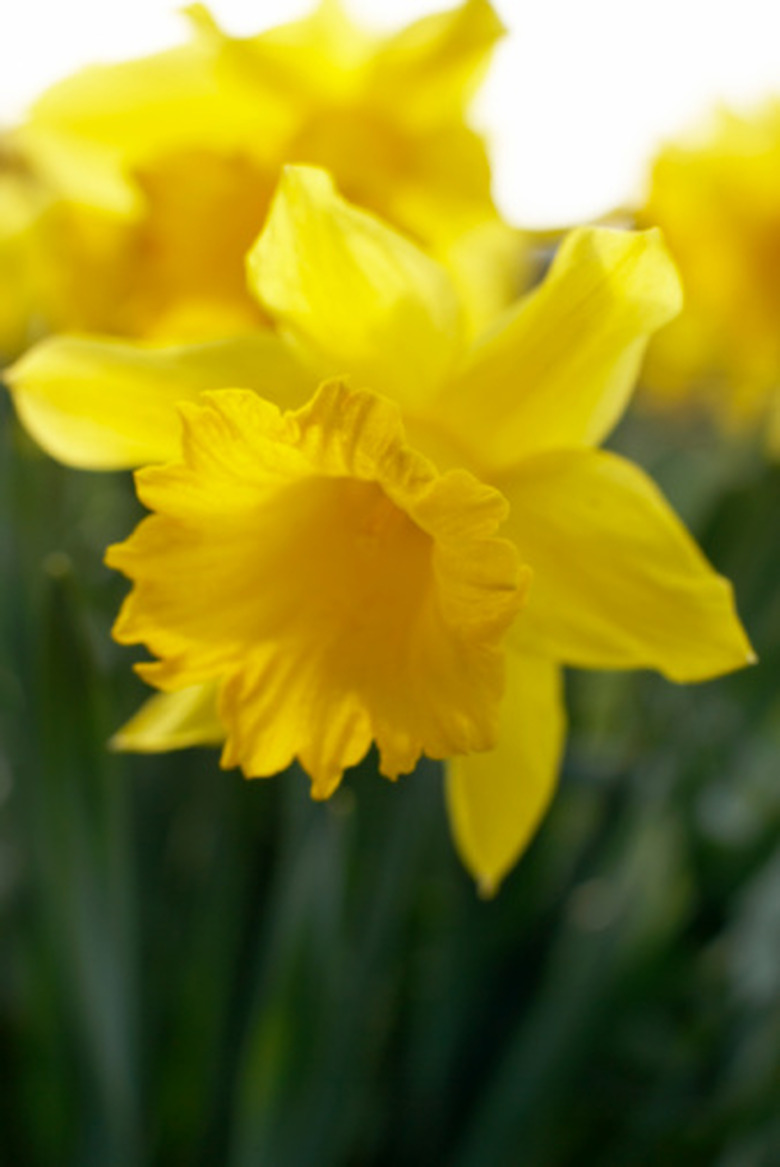What To Do With Daffodils When The Flowers Have Died?
Daffodils (Narcissus spp,) add welcome spring blooms to your landscape, in the ground, outdoor containers or forced for indoor enjoyment. The foliage, however, is what replenishes the bulbs to produce flowers the following year.
Daffodils (Narcissus spp,) add welcome spring blooms to your landscape, in the ground, outdoor containers or forced for indoor enjoyment. The foliage, however, is what replenishes the bulbs to produce flowers the following year. After the flowers die, ensure that the foliage flourishes if you want to see more blooms in future seasons.
Save or Toss?
The first thing to do when your daffodil flowers die is decide if you'll keep the bulbs. The daffodil life cycle requires a process of vernalization or chilling; if you don't provide 10 to 16 weeks of temperatures below 45 to 50 F, your bulbs won't flower.
Bulbs also require their leaves to grow in good light for six to eight weeks to replenish the bulb so it can flower again. If your bulbs have been blooming indoors, especially if they've been set in water, rather than soil, they're unlikely to gain sufficient nourishment to bloom again the next year. If you forced daffodils into bloom indoors or bought them pre-cooled or chilled them yourself in a refrigerator before setting them outdoors, they may not be worth saving.
- Daffodils (Narcissus spp,) add welcome spring blooms to your landscape, in the ground, outdoor containers or forced for indoor enjoyment.
- The daffodil life cycle requires a process of vernalization or chilling; if you don't provide 10 to 16 weeks of temperatures below 45 to 50 F, your bulbs won't flower.
Good Grooming
The first thing to do if you will keep your bulbs is remove the dead flowers. You can remove the flower stalk, but this isn't necessary. Snap off the dead bloom to tidy up the plant and to keep the bulbs from putting energy into forming seedpods. Do not remove, braid or otherwise confine the foliage. Anything that deprives the bulb of foliage, or prevents the foliage from getting sunlight will diminish the bulb's ability to replenish itself for flowering next spring.
When the Foliage Dies
Typically, daffodil foliage will die back on its own within a couple of months. As it deteriorates you can gently encourage it to lay down, as long as you don't obstruct its access to sunlight. When the foliage is dead, carefully pull it away from the base and remove it.
- The first thing to do if you will keep your bulbs is remove the dead flowers.
- As it deteriorates you can gently encourage it to lay down, as long as you don't obstruct its access to sunlight.
Sometimes foliage persists beyond the six to eight weeks the bulbs need for replenishing because of a cool summer or more rain than usual. Don't cut the foliage back if at all possible, because cutting tools can spread viral diseases.
Other Care
If your bulbs didn't flower well, you may want to dig them up after the foliage has died most of the way back. This is usually only necessary If the bulbs seem crowded, you may want to divide them to give them more growing room. If they seem to be dwindling, they may need more light or better drainage. Daffodils don't require heavy fertilization and when they are going dormant is not a good time to feed them.
If you choose to dig your bulbs, carefully do so while the foliage is still attached so you're sure you can locate them. You can spread them out to dry in a cool location before replanting. Replant soon or at your regular fall planting time. Plant daffodils about 6 inches deep. It is best to fertilize at planting time, just before the bulbs begin their active root growth. Use a low-nitrogen fertilizer or one especially for daffodils.
- Sometimes foliage persists beyond the six to eight weeks the bulbs need for replenishing because of a cool summer or more rain than usual.
- If your bulbs didn't flower well, you may want to dig them up after the foliage has died most of the way back.
